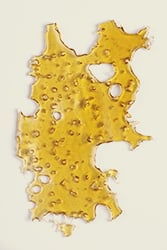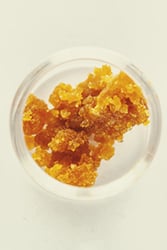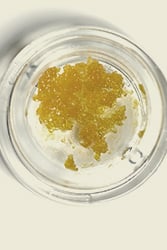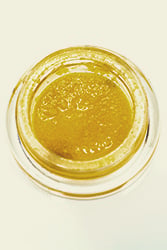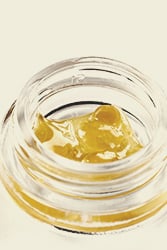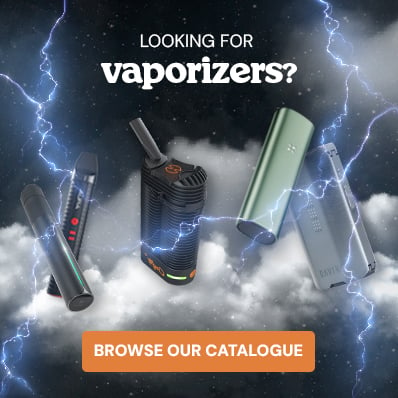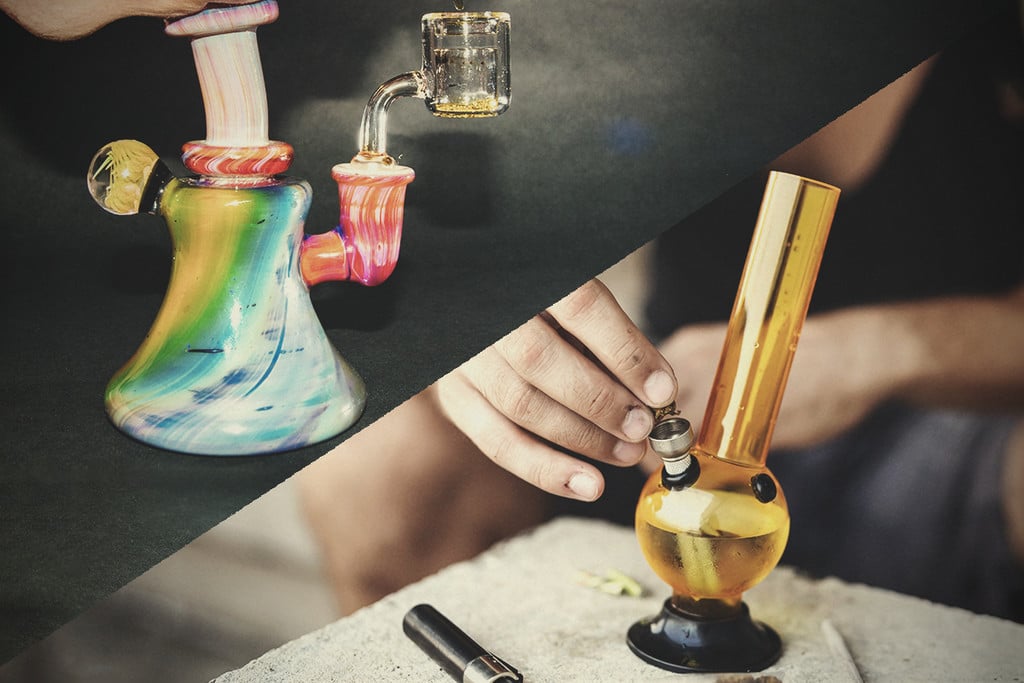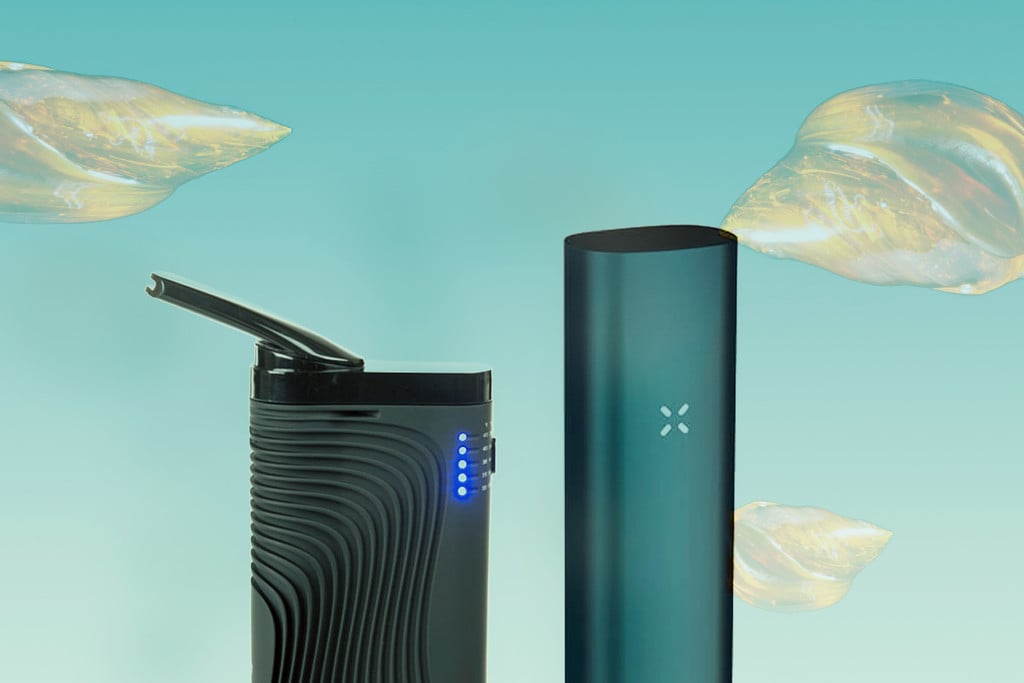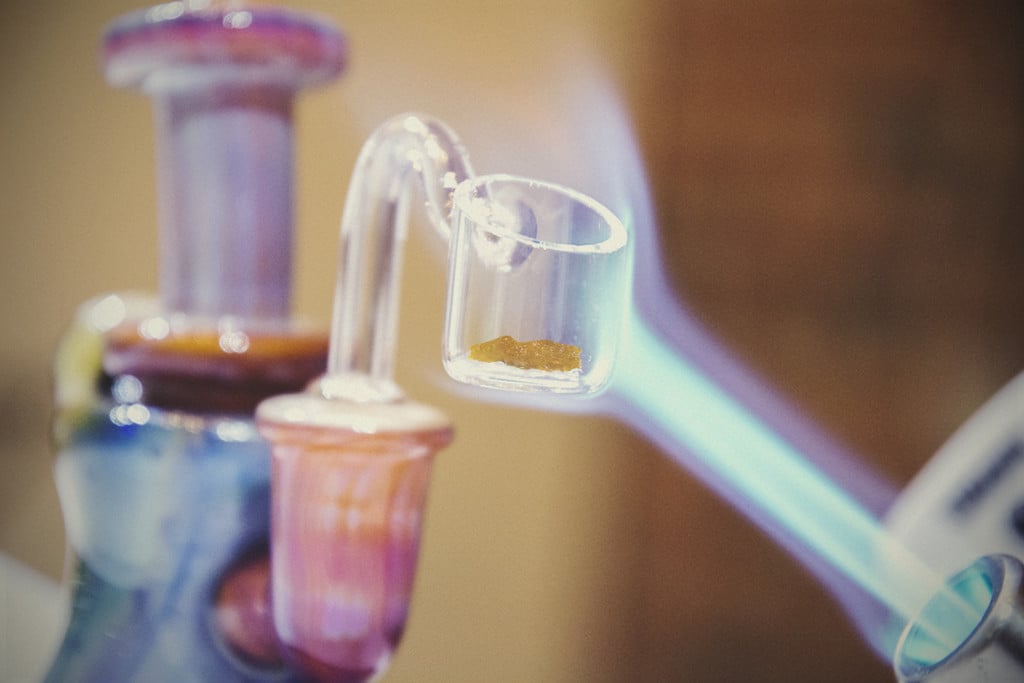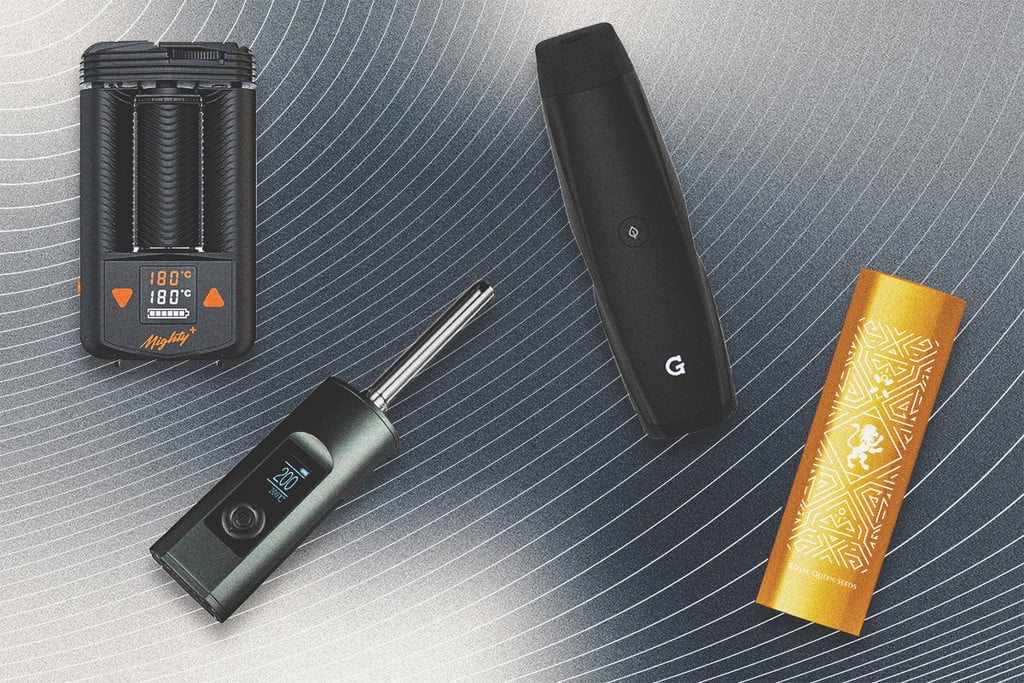.
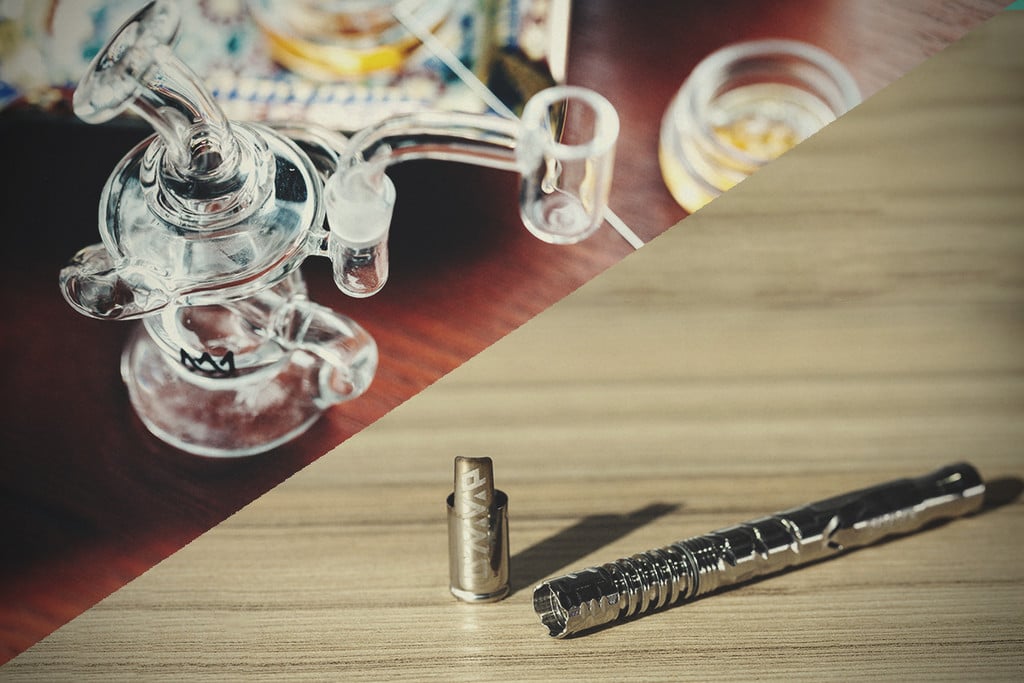
What's the Difference Between Dabbing and Vaping?
In our wonderful modern world, there are many ways to consume cannabis. Sometimes, deciding how best to enjoy your precious bud can be a stressful affair. But we're here to help. Here we break down the differences between dabbing and vaping, and ask, which is better?
Contents:
Dab pen vs vape pen; dabbing vs vaping—a tough contest, the winner of which depends on you. However, there are some distinct differences between dabbing and vaping as methods of consuming cannabis that can help you make a decision between the two.
Dabbing and Vaping: What Do You Need to Know?
Dabbing and vaping have been around for a while, but have gained greater popularity as cannabis has moved out of the shadows and into the light. As a consequence, there's a lot of interest surrounding these methods of consumption.
Both dabbing and vaping involve the inhalation of vapor, rather than smoke, as a means to get high. So what’s the difference?
Dabbing
To dab, one must have a dab rig. These function similarly to bongs, but instead of burning raw flower, the user vaporises cannabis concentrate in a glass, quartz, or metal “nail” or “banger”. Rather than heating the nail with a traditional lighter, one uses a butane torch to get the nail red-hot for effective vaporisation.
Some key features of dabbing are:
- Uses exclusively cannabis concentrates
- Involves a banger, nail, or e-nail
- The vapor passes through water and filtration systems (percolators)
- Traditional rigs don’t allow you to dial in exact temperatures (but e-nails do)
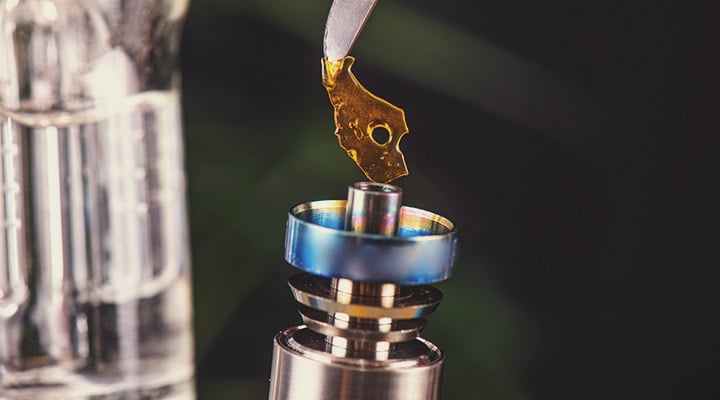
Vaping
Vaping, on the other hand, uses raw material (dried herb) or concentrates (oils/e-liquids). Vapes come in all shapes and sizes, but perform the same functions. Generally, all you need to do is pack your device, and take a pull.
Some key features of vaping are:
- Available as a desktop or portable device (vape pen)
- Utilises dried herb or concentrates, depending on the device
- Vapor does not pass through water, but will likely pass through chambers and channels specifically designed to retain flavour
- Allows for a high degree of accuracy when choosing temperature
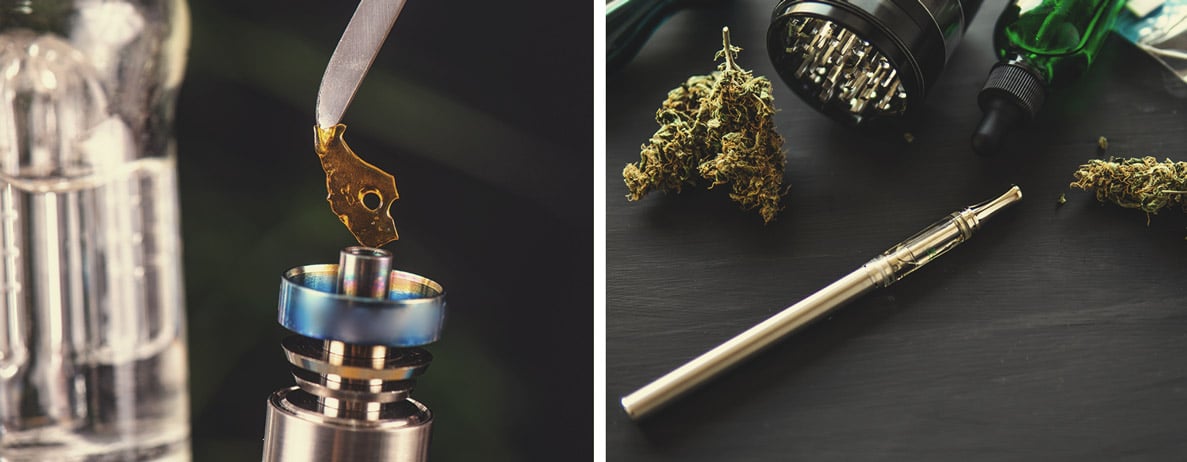
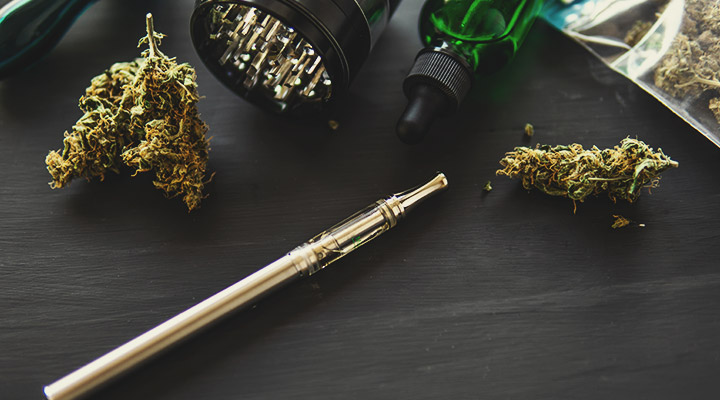
Dabbing vs Vaping: How Do They Compare?
Both dabbing and vaping are in fact forms of vaporisation, but the experience of each is quite distinct. The major distinction lies in the material consumed, which affects flavour, the quality of the high, and more.
Below we outline the major similarities and differences between dabbing and vaping.
-
Cannabis Material
As mentioned, perhaps the crucial difference between vaping and dabbing is the material used.
Dabbing utilises exclusively concentrates—aka “dabs”. Concentrates are cannabis extracts made by, well, concentrating the resin from the cannabis plant’s trichomes. It’s in these glandular outgrowths that cannabinoids, terpenes, and flavonoids are produced. As a result, concentrates are pure, powerful, and flavourful.
Concentrates come in many forms, each behaving slightly differently, including:
Vaping, on the other hand, utilises dried herb and/or concentrates. Some devices are made exclusively to handle ground bud, whereas others (like disposable vape pens) come loaded with an oil concentrate. Others are able to handle herb or oil using certain add-ons. For vapers of dried plant material, the experience is more akin to traditional smoking—just without the combustion—whereas hitting a vape pen filled with oil will feel closer to dabbing.
-
Temperature
When you smoke cannabis, you need to combust it and keep it alight to inhale its constituents. With vaping or dabbing, all you need to do is heat the material until the cannabinoids and terpenes reach their boiling points, which is far below the point of combustion.
The temperature ranges tend to be similar for dabbing and vaping, although it varies.
Low-temperature dabbing is considered to occur at between 157°C and 232°C. That said, some individuals dab at temperatures of up to 371°C and beyond, which brings the experience closer to combustion.
Another point of note is that dabbing is far less accurate in terms of achieving a specific temperature. After all, you’re heating the nail with a blowtorch, and therefore have less control. E-nails are the exception to this, as they are created to allow for flame-free dabbing and work by heating the nail to a specific temperature using electricity.
With vaping, you’re likely to be working within a range of 157–221°C, especially when it comes to dried herb, although this maximum is exceeded with some concentrate-oriented devices.
A large share of modern vaporisers come with customisable temperature settings, allowing users to focus on specific cannabinoids and terpenes.
Conduction and Convection
Put simply, all dab rigs use conduction heating, and vapes use either conduction or convection. Conduction works by heating a substance directly—e.g. a hot nail vaporising a dab on contact—whereas convection works by passing hot air over a substance, such as when you inhale from a vape.
Conduction vaporisers have the heating element positioned beside the chamber or oven, so it directly heats the herb, causing it to vaporise. This is essentially how a dab rig works too, except on a slightly more dramatic scale.
As mentioned, rather than heating the herb or oil directly, convection vaporisers draw hot air through the material, achieving vaporisation via a less-aggressive means.
There are pros and cons to each type of heating system. Conduction units tend to be smaller, a little cheaper, and often produce bigger clouds; convection units are larger and more expensive (though this is changing). The flip side is that convection vapes don’t threaten to burn your herb, whereas this is possible with a conduction oven. That being said, with appropriate temperature control, this shouldn’t pose too much of an issue.
-
Potency
Ultimately, dabbing wins the potency contest hands down. And there are a couple of reasons for this. One obviously has to do with the material used. Whereas traditional dried herb can reach up to about 30%+ THC, concentrates can exceed 80%.
Aside from this, dabbing typically involves taking a single, large hit at a time, which results in a much more psychoactive experience compared to “sipping” on a vape pen loaded with oil—much less herb.
So you can expect the strongest, purest highs from concentrates. However, the effects of vaped herb are not to be scoffed at. High-quality flower vaporised at the right temperature is still going to provide an enjoyable high. It’s just not possible to reach the same outrageous potency as with dabbing.
-
Flavour
Over smoking, both dabbing and vaping are considered to be much better in terms of flavour. As neither uses combustion, those tarry, burnt flavours can be avoided, giving more space for the terpenes to show themselves.
Once again, though, dabbing wins here. Though this has less to do with the method or apparatus, and more to do with concentrates themselves. Not only do concentrates contain a massive proportion of cannabinoids, but terpenes as well. Terpenes are what give cannabis its diverse and distinct range of flavours. By concentrating them, we are able to appreciate them in higher amounts, and at their very best.
That said, some people prefer the “herbal” taste of regular bud, which vaping does a great job of highlighting.
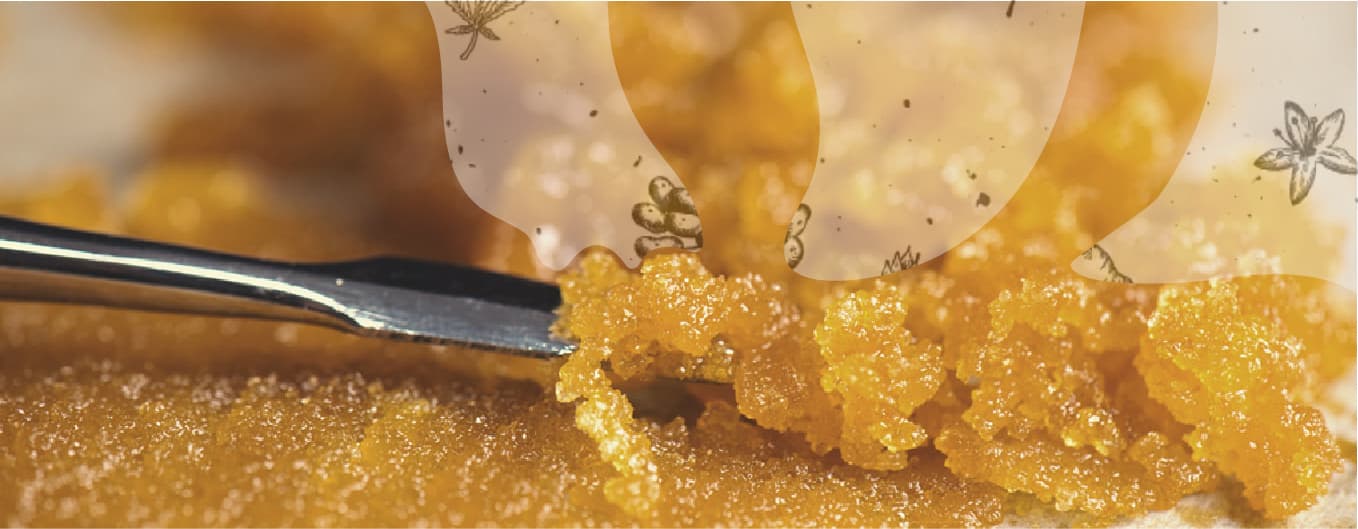
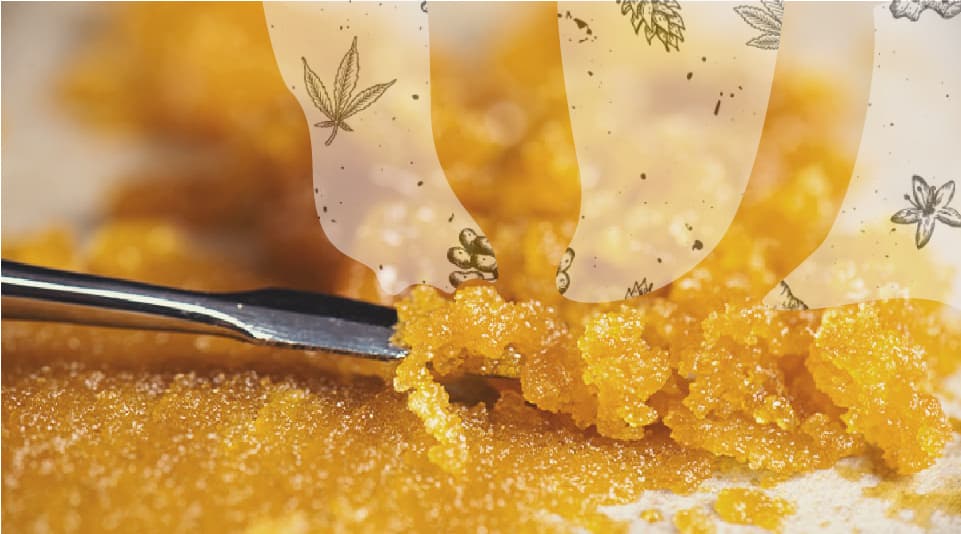
-
Health
Both methods are thought to be physically healthier than smoking[1], although there’s not a lot of high-quality data to confirm this. Still, it’s thought that they present less of a risk to airways as they lack many of the damaging combusted materials inhaled through smoking. The process of combustion is what makes many compounds carcinogenic.
That being said, researchers have also pointed to the increased psychological risks of dabbing (due to the potency of the experience). These include a greater chance of symptoms such as paranoia, psychosis, and addiction[2].
So when it comes to choosing between the two on health grounds, it’s worth noting that neither necessarily has a significant advantage over the other. Indeed, it’s likely that vaping is better for your lungs compared to smoking, but whether vaping or dabbing is better physically is unclear.
Should You Buy a Dab Rig or Vaporiser?
Before we proceed into further considerations, your primary concern will be access. If you can’t source concentrates, and you’re not willing to make them, then dabbing can be ruled out immediately.
If you have access to both concentrates and cannabis flower, then here are some further variables to consider.
-
Dabbing
Dab rigs start pretty cheap—around £50. You can even pick up a dab rig with an e-nail for under £100. On top of this, the only other pieces of equipment you’ll need are dabbing tools (which are incredibly cheap) and a dab torch, which can cost as little as around £15. Given those prices, you should be able to set yourself up comfortably for under £100 if you want to.
That being said, concentrates are expensive! Whether you buy them or make them yourself, it takes a lot of flower to make a small amount of concentrate. This is offset slightly by the fact that you need less to get high, but running costs are likely to be greater if you're dabbing concentrates, no matter how you get hold of them.
In the long run, dabbing is likely to be the more expensive option.
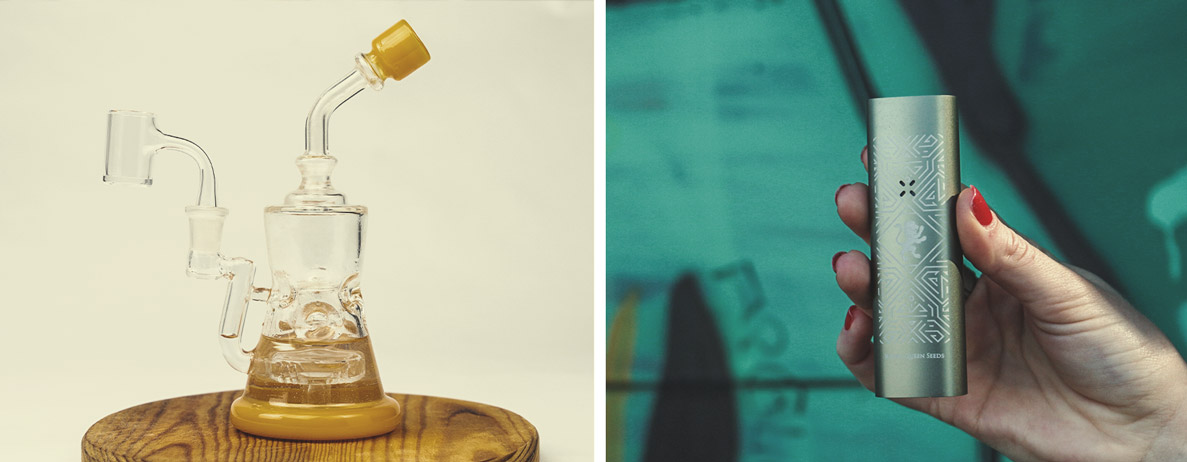
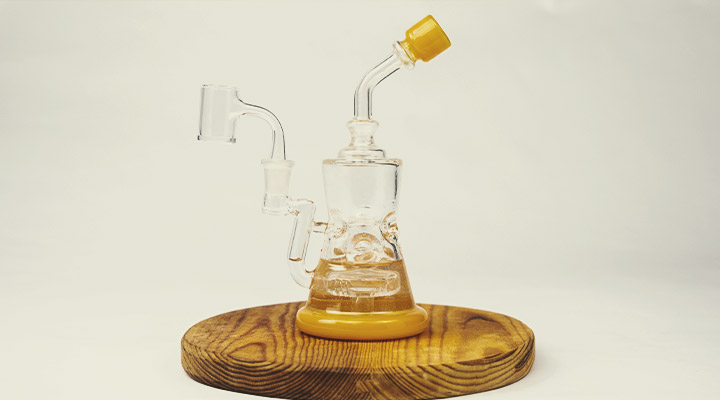
-
Vaping
To vape, you only really need the vaporiser/vape pen (and some weed). Now, these can cost hundreds of pounds, but there are some available for less than £100 that are still very good. However, the initial cost of vaping tends to be higher than dabbing.
You’ve probably guessed what’s coming next. Cannabis flowers are cheaper than cannabis concentrates, and so the running costs of vaping are cheaper than those of dabbing.
In the long run, vaping will probably work out cheaper.
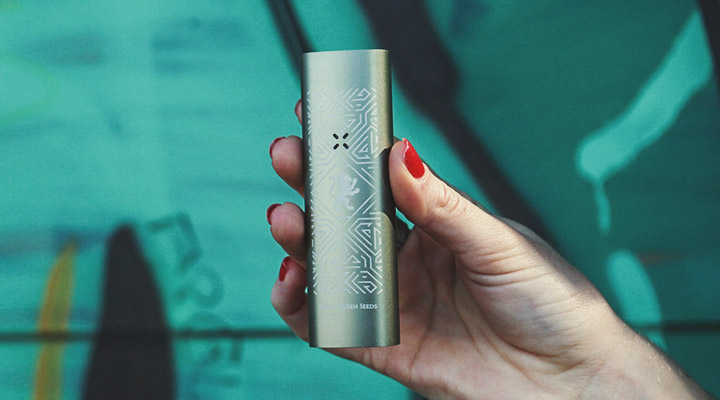
Dabbing vs Vaping: Which Is Better?
Neither is better nor worse, ultimately. For many, dabbing is considered the purest, and by far the most potent, way to consume cannabis, but that’s not always what one desires. Not everyone wants to be limited to vaping 80% THC concentrates.
If you can do both, then that’s a great option. Dabbing is wonderful, but for many is financially and psychologically unsustainable as the only means to get high. Vaping, on the other hand, offers the perfect combination of being “cleaner” than smoking, but similar enough in effects.
If you're lucky enough to try both, have a dabble and see what tickles your fancy!
DisclaimerExtracts, concentrates, and oils used for dabbing are among the strongest cannabis products available. Proceed with caution when using substances high in THC. Start with low doses and slowly increase over time to build up a tolerance to the compound.
Remember: Set and Setting will help you deal with various situations.
Stay Cultivated.
- No smoke, no fire: What the initial literature suggests regarding vapourized cannabis and respiratory risk https://pubmed.ncbi.nlm.nih.gov
- Cannabis dabbing https://www.ncbi.nlm.nih.gov


























